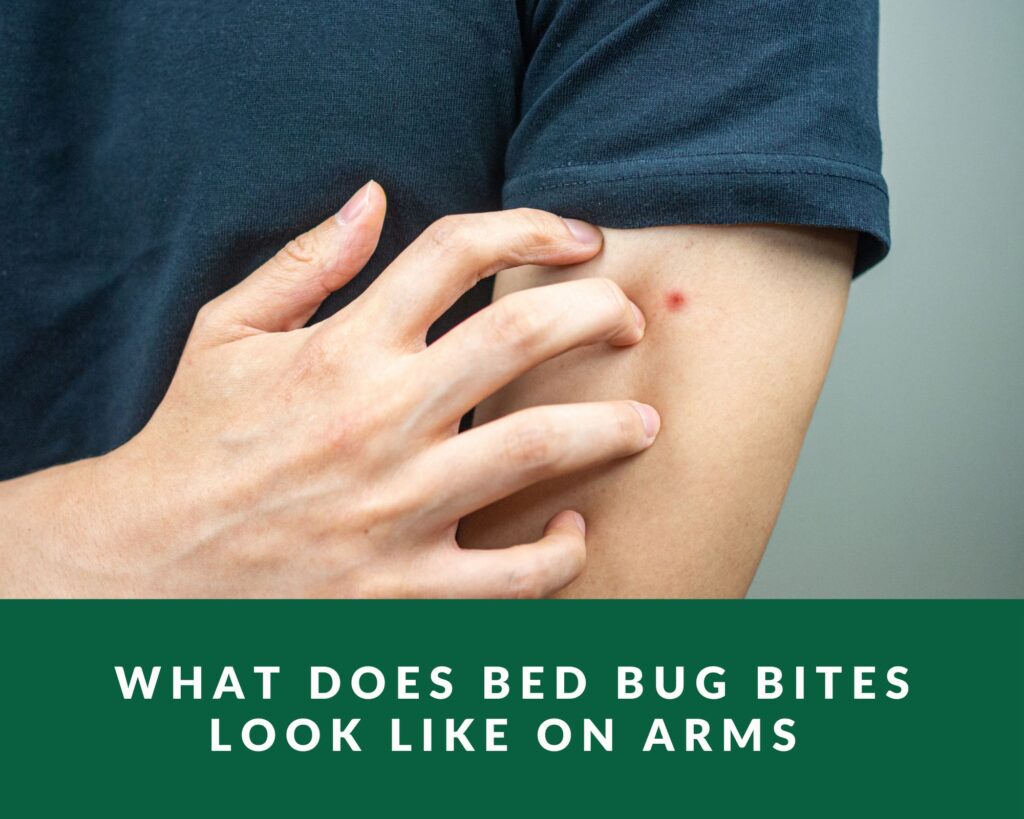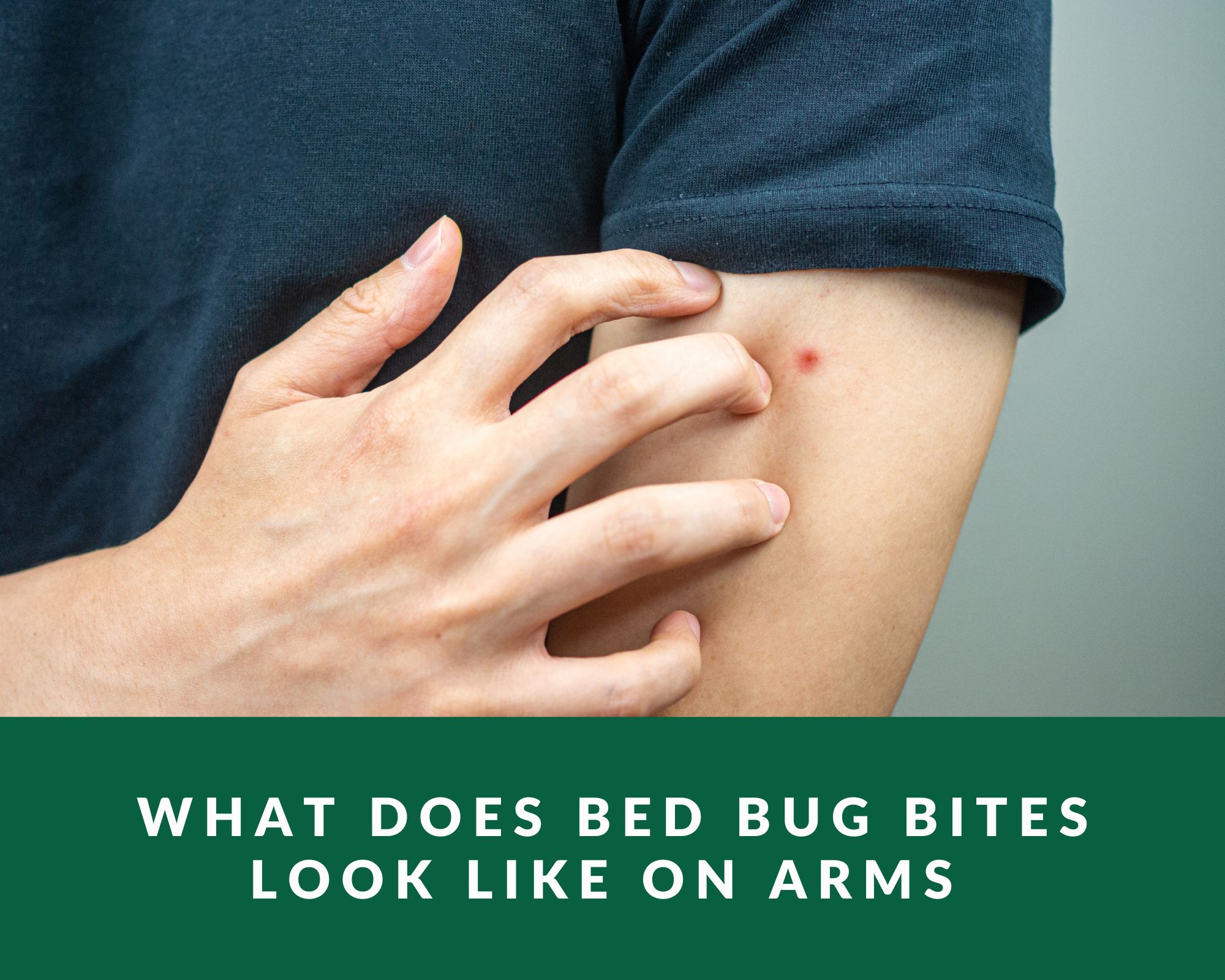
Although bed bugs and humans have coexisted since the dawn of time, their ages are practically identical. Due to the fact that bed bugs are parasites of humans, they do not spread diseases. What does a bed bug bite look like on arms?
The bed bugs do not give their human food sources anything that could sabotage the sources. Despite the fact that they cannot spread diseases, they can nonetheless provide some risks to people.
Since their mouth parts are so refined, bedbugs may pierce human flesh. Their bite is not harmful. The bites may not cause any reaction in some persons, but in others, the bites may itch and grow into reddish itchy welts.
How do I know if I have bed bugs?
A bed bug bite might be your first obvious symptom. If you have been bitten and want to make sure you have bed bugs, look for these indications of an infestation:
- A musty, sweet smell.
- Rusty or reddish stains on the linens, clothing, or adjacent items. This is the necessary bed bug excrement that bed bugs produce after eating.
- Shell casings
- Mattresses and bed sheets with live bed bugs in them.
Note: The movement of the bug you find will help you identify it because bed bugs move more slowly than other little insects.
In this post, we’ll concentrate more on “Bed bug bites,” which are one of the bed bug symptoms.
Where do bed bug bite on humans
Any area of your body that is exposed while you sleep may develop bites, including the back of your neck, shoulders, arms, and legs.
What does a bed bug bite look like
Bites from bed bugs resemble swollen, red spots and frequently itch. A spider, flea, or mosquito bite-like appearance.
Although this isn’t always the case, bed bug bites frequently occur in small clusters and may follow a line or zigzag pattern. Bites typically appear as small, flat or raised regions that can swell, itch, turn red, or blister.
It may take a few days for bed bug bite reactions to start creating symptoms, and they don’t always manifest right away after being bitten. However, not everyone responds the same way to bed bug bites. Numerous distinct factors influence the size of bed bug bites.
When bed bugs pierce the skin to feed on blood, they also inject an anticoagulant with their saliva. This anticoagulant controls the size of the bug’s bite as well as how a person reacts to being bitten. The size of the bite will vary because each person’s sensitivity to bedbug bites will be different.
The quantity of bites a person receives from bed bugs is another element that affects the size of a bed bug reaction. People who have been bitten numerous times might react to bites in a variety of ways, and as the number of bites rises, their reaction may become more or less intense. Bed bug infestations can cause predictable patterns of bites on their victims.
How do bed bugs feed
Bed bugs favor feeding on human blood (but they can survive on the blood of mice, rats, or other animals, too). But because bed bugs inject anesthesia and an anticoagulant to numb the region as they bite you, you generally won’t catch the insects in the act.
Additionally, bed bugs are extremely sensitive to host movement when they are eating. Because of this, if a sleeping person moves, a bed bug that is feeding will likely withdraw its mouthparts and start looking for a blood meal on another region of the body.
It’s crucial to keep in mind that the quantity of bed bugs feeding on a person is not directly related to the number of bites that person receives.
How to differentiate bed bug bites from other bites
Bed bugs differ from other insects in that their bites frequently appear in a line or cluster on one side or area of your body. This is the result of what’s called “probing.”
When a bed bug locates its host, it uses its mouthparts to probe the skin in search of a capillary that will allow blood to flow quickly into their bodies. Before beginning to feed, a bed insect may examine the skin many times.
The host will experience multiple “bites” from the same bug as a result of this probing. Avoid scratching the rash if you experience it after being bitten by a bed bug. Contact a doctor right away if the rash doesn’t go away or turns into an infection.
Spider, mosquito and flea bites versus bed bug bites
Bed bug bites
Bedbug bites can cause rashes and symptoms that are similar to other insect bites. Bed bug bites typically appear as itchy, inflamed spots on the face, neck, arms, and hands that are arranged in a rough line or cluster.
They are also frequently larger and darker in the center. Bedbug bites on the arm can cause an allergic reaction in some people, which can include intense itching, blisters, or hives.
Spider bites
Red, itchy lumps may also be left behind by spiders. However, unlike bed bugs, which can bite a person repeatedly, spiders typically only do so once or twice.
Additionally, spider bites are rather uncommon and often only occur when the spider is threatened or handled. As a result, you would probably be aware that a spider bit you.
This is particularly true if the spider in question was a deadly one like a brown recluse or black widow. People frequently encounter extra types of observable symptoms with these kind of spiders. Nausea, cramping in the muscles, trouble breathing, and itchy blisters are typical symptoms.
Mosquito bites
Examining the locations of the bites on your body is one of the greatest ways to distinguish between mosquito and bed bug bites. Mosquito bites typically happen on their own in isolated, haphazard locations.
On the other hand, bed bug bites tend to occur in groups. Bed bug bites frequently have a line or zigzag pattern.
Flea bites
At first glance, bedbug and flea bites look very similar, making differentiation challenging. Generally, flea bites are virtually often on the lower body. It may be felt practically instantly, don’t normally create patterns, and emerge as random tiny groupings over various places. In contrast to bed bug bites, flea bites ache practically immediately.
Conclusion
Traveling parasites called bed bugs can itch and hurt when they bite. Make sure to take precautions to keep bed bugs out of your home by covering your mattress with a cover and washing your clothing in hot, soapy water as soon as you arrive home from a trip.

